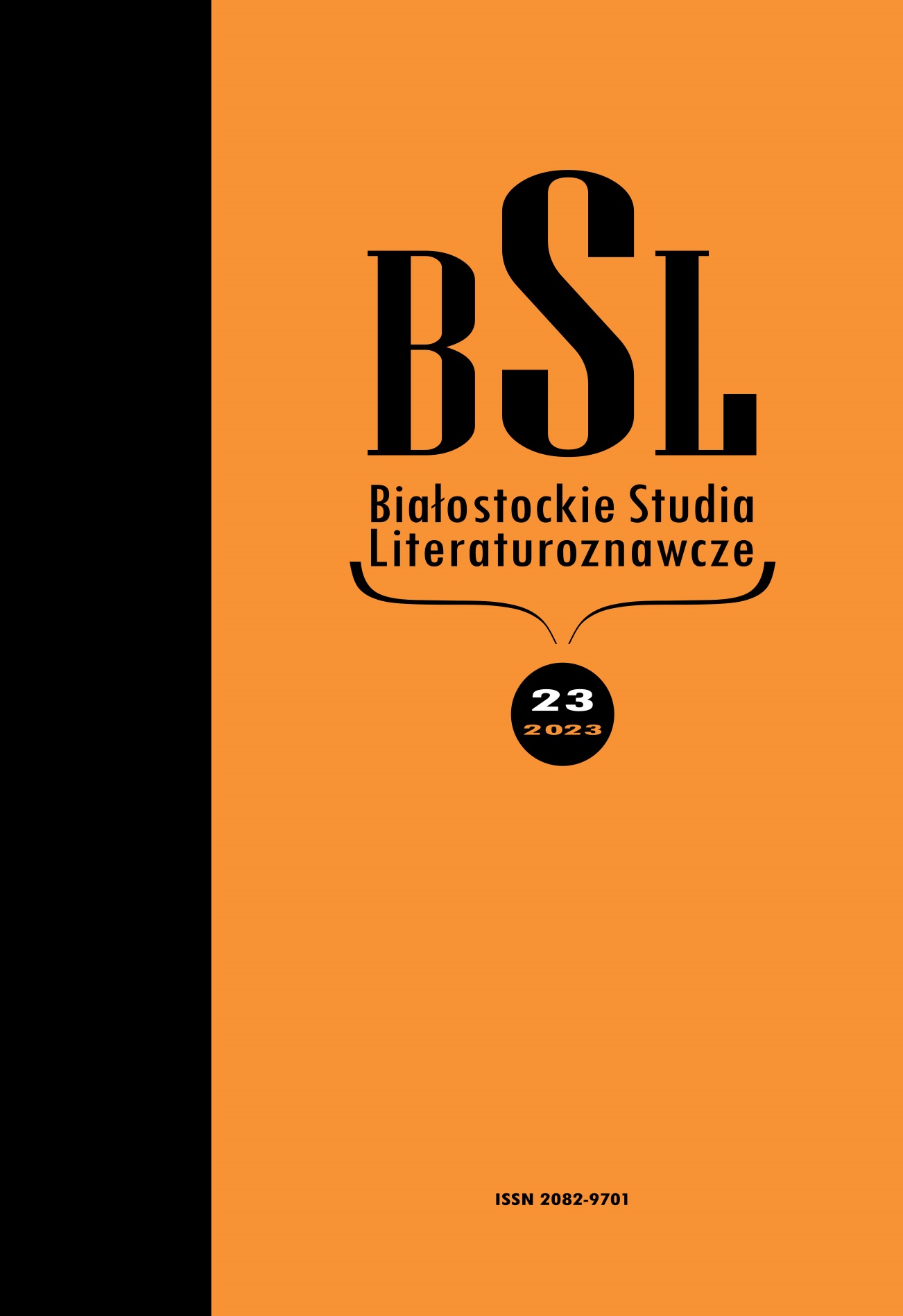The Sensory Landscapes of Polesie in the Prose of Alexander Kuprin
Joanna Nowakowska-Ozdoba
Institut of Literary Studies and Liguistcs. University of Jan Kochanowski in Kielcehttps://orcid.org/0000-0003-4881-0187
Abstract
The article is devoted to the analysis of the sensory landscape in the Polesie prose of Alexander Kuprin. The landscape is built from a combination of various impressions: visual, auditory, olfactory, and tactile. The relationship between the hero and the landscape depends on the type of senses which are activated in landscape observers: visual impressions create a distance, other sensations eliminate it. With this writer,, the human sensorium is most often activated holistically, which means that the dominant visual and auditory landscapes are complemented by tactile and olfactory impressions. The perception of the landscape and the landscape itself are polysensory. The sensory experiences of Kuprin's heroes include impressions characteristic of Polesie, creating the territorial identity of this region. Therefore, the main role of the sensory landscape in the analyzed works is the recreation of local color. The influence of the landscape on the emotions of observers is also important.
Keywords:
sensory landscape, sensual impressions, polysensory perception of the landscape, territorial identity, Alexander KuprinReferences
Kuprin Aleksander (1971), Boloto, w: A. Kuprin, Sobranie soˇcinenij, t. 3, Moskva: Wydawnictwo „Hudoˇzestvennaâ literatura”, s. 201–219.
Kuprin Aleksander (1971), Konokrady, w: A. Kuprin, Sobranie soˇcinenij, t. 3, Moskva: Wydawnictwo „Hudoˇzestvennaâ literatura”, s. 239–264.
Kuprin Aleksander (1971), Lesnaâ gluˇs, w: A. Kuprin, Sobranie soˇcinenij, t. 2, Moskva: Wydawnictwo „Hudoˇzestvennaâ literatura”, s. 286–311.
Kuprin Aleksander (1989), Na głuszce, przeł. J. Litwiniuk, w: A. Kuprin, Sulamitka i inne opowiadania, Warszawa: Wydawnictwo „Współpraca”, s. 25–37.
Kuprin Aleksander (1976), Noˇc v lesu, w: A. Kuprin: Povesti. Rasskazy, Leningrad: Wydawnictwo Lenizdat, s. 668–676.
Kuprin Aleksander (1960), Olesia, w: A. Kuprin, Bransoletka z granatów, przeł. Z. Fedecki, Warszawa: Wydawnictwo Iskry, s. 7–110.
Kuprin Aleksander (1971), Serebrânyj volk, w: A. Kuprin, Sobranie soˇcinenij, t. 3, Moskva: Wydawnictwo „Hudoˇzestvennaâ literatura”, s. 105–113.
Ong Walter Jackson (1992), Oralność i piśmienność. Słowo poddane technologii, przeł. J. Japola, Lublin: Redakcja Wydawnictw KUL.
Pallasmaa Juhani (2011), Krajobrazy zmysłów. Dotykanie świata przez architekturę, przeł. M. Choptiany, „Autoportret”, nr 3, s. 4–11.
Parteous John Douglas (2014), Krajobraz zapachów, w: Krajobrazy. Antologia tekstów, red. B. Frydryczak, D. Angutek, Poznań: Wydawnictwo Poznańskiego Towarzystwa Przyjaciół Nauk, s. 465–485.
Rybicka Elżbieta (2012), Literatura, geografia: wspólne terytoria, w: Od poetyki przestrzeni do geopoetyki, red. E. Konończuk, E. Sidoruk, Białystok: Wydawnictwo Uniwersytetu w Białymstoku.
Rybicka Elżbieta (2014), Geopoetyka. Przestrzeń i miejsce we współczesnych teoriach i praktykach literackich, Kraków: Wydawnictwo Uniwersitas.
Institut of Literary Studies and Liguistcs. University of Jan Kochanowski in Kielce https://orcid.org/0000-0003-4881-0187
License

This work is licensed under a Creative Commons Attribution-ShareAlike 4.0 International License.
Articles published on the platform of Białostockie Studia Literaturoznawcze are available under the license CC-BY-SA 4.0 (CC Attribution-ShareAlike 4.0).
All interested parties have access to the published articles under the following conditions:
1.They must acknowledge authorship, which means crediting the author, title, source, together with the disseminated work (including the hyperlinks to the original work and doi) as well as the same license under the same conditions.
2. Derivative works can be distributed only under the same license as the original work.
The University of Białystok retains the right to the entire journal (layout, graphic design, title, cover design, logo, etc.).
The author retains the property right but confers on the University of Białystok the right to use the work.



